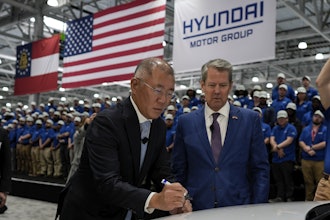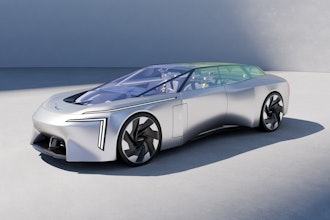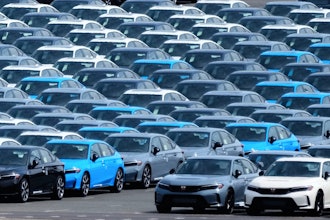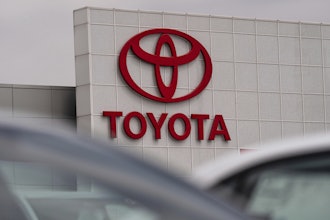LADSON, S.C. (AP) -- Force Protection, the military manufacturer that grew rapidly when the nation went to war, on Thursday unveiled a new prototype of a lighter armored vehicle on which the company is staking a key part of its future.
The company largely developed MRAPs -- mine-resistant, ambush-protected vehicles -- and has grown over the past five years from only about a dozen people to about 1,500, with sales of $744 million during the first half of this year.
But a possible military drawdown in Iraq and increased competition from other manufacturers may portend less dramatic growth.
The company is best known for its Buffalo and Cougar vehicles: heavy trucks with "V'' shaped hulls that deflect the blasts of roadside bombs away from the crew compartment. The Buffalo, used to clear mines, weighs 22 tons; the Cougar, a personnel carrier, weighs 16 tons.
With plans to redeploy troops from Iraq to Afghanistan, the Marine Corps this summer asked companies to submit information for the so-called "MRAP Light" to find out how existing vehicles could be changed to meet the latest needs of the service in Afghanistan.
The service has yet to approve the hybrid armored vehicle, which would provide the same protection as an MRAP, but would be more agile and provide improved maneuverability on rocky, mountainous terrain. If the program is not certified by the Pentagon, the service will not be able to place orders for manufacturers' vehicles.
The 8-ton Cheetah prototype, which has an independent suspension and has been in development for several years, is Force Protection's answer.
"The Cheetah is very important to us," chief executive Michael Moody said Thursday.
The company also showed off a new version of the Cougar on Thursday, one reconfigured to haul cargo. The company has delivered 1,345 Cougars and 49 Buffalos during the first half of this year. In an investor conference call last month, Moody said the company had a backlog of 763 vehicles ordered.
Moody said he was aware that, after those orders are filled, investors are concerned about the company having too few orders and a decline in profits. "This is a major risk for our business," he said last month.
On Wednesday, Force Protection and its partner DRS Technologies Inc. were notified that they lost the first round of bidding on the Joint Light Tactical Vehicle program, which will be used to replace the Humvee. The project could ultimately be worth $20 billion or more.
Force Protection stock, which reached a high of $31.16 in May last year, has declined sharply as the military has cut back orders for MRAPs. It opened at $2.56 on Wednesday.
"Future results of operations will depend to a large degree on our ability to sell significant quantities of Cheetah vehicles," said the company's annual report, released last month.
Moody told analysts last month that while the company virtually developed the MRAP, only 27 percent of the more than 900 MRAPs in Afghanistan and close to 8,000 in Iraq were made by Force Protection.
"We did not make the most of the opportunity our innovation presented to us," said Moody, who became the company's top executive in February. "The company was not good at evolving itself and its products to meet the need of the customer."
Other makers of MRAPs now include General Dynamics, Navistar International Inc. and the U.S. subsidiary of British defense conglomerate BAE Systems PLC.
There also was another MRAP manufacturer about 10 miles from Force Protection in South Carolina, but Protected Vehicles failed to deliver fully on a $37 million Marine contract and filed for bankruptcy protection earlier this year.
Besides competition, less demand may affect Force Protection. Late last year, the Marines decided to buy a third fewer bomb-resistant vehicles, and a change in administration in Washington could mean fewer orders, too, though military experts are skeptical.
"I don't see the need for these vehicles going away," said Earl Walker, a retired Army armored officer who teaches management and leadership at the military college The Citadel. "I don't really expect the Democrats are going to dramatically change arrangements in Iraq despite all the commentary you read."


















